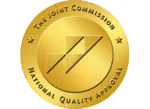Opioid overdose has become a major public health crisis, impacting millions of individuals and families worldwide. In recent years, the use of opioids for pain management has significantly increased, leading to a rise in opioid-related deaths. In response to this devastating trend, efforts have been made to increase awareness and education on opioid overdose prevention.
Learn how our luxury rehab treatment in Los Angeles can help you or a loved one overcome opioid use disorder (OUD). Don’t hesitate to get the help you deserve.
What Is Opioid Overdose Prevention?
Opioid overdose prevention refers to the strategies and measures that aim to reduce the number of opioid overdoses and deaths. It involves a range of interventions, from providing education on safe opioid use to implementing policies and programs that increase access to naloxone, a medication used to reverse an opioid overdose.
In addition to education and naloxone distribution, other measures such as prescription drug monitoring programs, pill disposal methods, and increased access to substance abuse treatment are also part of opioid overdose prevention efforts. These interventions aim to reduce the misuse of opioids and prevent individuals from becoming addicted in the first place.
It is important to seek professional treatment if you are at risk of opioid overdose. Our intensive outpatient program for substance abuse provides a safe and supportive recovery environment for those struggling with opioid abuse.
How Is Opioid Overdose Preventable?
 Opioid overdose is a major public health crisis that has been on the rise in recent years. As of 2021, Los Angeles County has seen a significant increase in opioid overdose deaths and drug overdose deaths. According to the Los Angeles County Department of Public Health, there were 1,386 opioid overdose deaths in 2020, a 48% increase from the previous year.
Opioid overdose is a major public health crisis that has been on the rise in recent years. As of 2021, Los Angeles County has seen a significant increase in opioid overdose deaths and drug overdose deaths. According to the Los Angeles County Department of Public Health, there were 1,386 opioid overdose deaths in 2020, a 48% increase from the previous year.
However, opioid overdose is preventable. Here are some opioid overdose prevention strategies:
One of the key opioid overdose prevention strategies is to educate yourself about the substances you are taking. Whether it’s prescribed medication or recreational drugs, it’s important to know what they are and their potential side effects and interactions.
When taking prescription medication, always follow the recommended dosage instructions provided by your doctor or pharmacist. Do not take more than prescribed or mix with other substances without consulting a medical professional first.
If you have a history of substance abuse or have experienced an overdose in the past, make sure to communicate this information with your doctor. They can work with you to find alternative treatments or adjust your dosage accordingly.
When using over-the-counter medications such as pain relievers or cough syrup, always use them as directed and avoid mixing them with alcohol or other drugs.
Mixing different substances greatly increases the risk of overdose as they may interact with each other in unexpected ways. This includes combining prescription medications with alcohol or mixing different types of drugs.
If you have leftover prescription medication that you no longer need, dispose of it properly according to FDA guidelines. This will prevent others from accidentally taking them and reduce the risk of misuse.
Naloxone is a medication that can reverse an opioid overdose if administered in time. This medication is available at many pharmacies without a prescription and can be easily administered by anyone with proper training.
If you or someone you know is showing signs of opioid overdose, seek help from our addiction therapy programs. We can provide resources and support to help overcome addiction and prevent future overdoses.
By implementing these opioid overdose prevention strategies, we can reduce the risk of overdose and promote overall health and well-being.
What Is Opioid Use Disorder?
Opioid use disorder (OUD) is a medical condition characterized by the compulsive and uncontrollable use of opioid drugs, despite harmful consequences. These drugs include prescription painkillers such as oxycodone and hydrocodone, as well as illegal substances like heroin.
Individuals with OUD may experience intense cravings for opioids and have difficulty controlling their use. They may also develop a tolerance to the drug, requiring larger doses to achieve the same effect. This can lead to dependence, where the body becomes physically and psychologically reliant on the drug to function.
Opioid use disorder is a serious public health issue, with millions of people worldwide affected by it. It can have devastating effects on individuals, families, and communities, leading to a range of physical, mental, and social problems.
Fortunately, there are effective opioid overdose prevention treatments that can help individuals manage their addiction and improve their quality of life. These treatments may include medications such as methadone or buprenorphine, support from our partial hospitalization program in California, and support groups like Narcotics Anonymous.
If you or someone you know is struggling with opioid use disorder, it is important to seek help from a healthcare professional. With proper treatment and support, recovery from OUD is possible.
What Is The Stigma Of Opioid Use Disorder?
The stigma of opioid use disorder (OUD) refers to the negative attitudes and beliefs surrounding individuals who struggle with opioid addiction. This stigma can manifest in various ways, including discrimination, prejudice, and social exclusion.
One of the main reasons for the stigma surrounding OUD is the misconception that addiction is a choice or a moral failing. Many people view those with substance use disorders as weak or lacking willpower, rather than recognizing addiction as a chronic brain disease.
This misunderstanding often leads to judgment and blame towards individuals with OUD, making it difficult for them to seek help and support. The fear of being judged and stigmatized may prevent people from seeking addiction treatment resources, which can lead to further isolation and exacerbate their addiction.
The stigma surrounding OUD affects not only those directly affected by the disorder but also their families and loved ones. They may also experience shame and guilt due to societal attitudes towards addiction.
What Are Opioids?
Opioids are a class of drugs that act on the body’s nervous system to relieve pain. They are often prescribed by doctors for severe or chronic pain, but they can also be obtained illegally. Opioids work by attaching to specific receptors in the brain and spinal cord, reducing the perception of pain and producing feelings of relaxation and euphoria.
One type of opioid that has gained attention in recent years is fentanyl. Fentanyl is a synthetic opioid that is 50-100 times more potent than morphine. It was originally developed as a powerful anesthetic for surgical procedures, but it is now used to manage severe pain in cancer patients and those with end-stage chronic illnesses.
According to data from the Centers for Disease Control and Prevention (CDC), fentanyl has been responsible for more deaths than any other opioid since 2013. In 2019 alone, over 36,000 people died from overdoses involving synthetic opioids like fentanyl – a staggering 60% increase from the previous year.
Benzodiazepines (benzos) are another type of medication that acts on similar receptors in the brain as opioids do, resulting in sedation and muscle relaxation. They are commonly prescribed for anxiety disorders or insomnia. When combined with opioids like fentanyl, benzos can increase the risk of overdose by suppressing breathing even further.
Our dual diagnosis treatment center addresses substance abuse along with any co-occurring mental health disorder such as anxiety or depression. Seeking professional help is the first step in long-term recovery.
What Are Signs Of An Opioid Overdose?
- Slow or shallow breathing: Opioids slow down the respiratory system, which can cause breathing to become slow, shallow, or even stop entirely.
- Blue lips or fingertips: As a result of decreased oxygen levels in the body due to slowed breathing, a person’s lips or fingertips may turn blue.
- Pinpoint pupils: When opioids are consumed in excess, they can cause the pupils to constrict and appear very small.
- Loss of consciousness: In severe cases, a person may lose consciousness due to the effects of opioids on the central nervous system.
- Limp body: Opioid overdose can cause muscle relaxation and weakness, leading to a limp body.
- Loud snoring or gurgling sounds: The slowed breathing caused by opioids may result in loud snoring or gurgling sounds as air passes through restricted airways.
- Confusion or disorientation: As opioids affect brain function and can cause drowsiness and confusion, someone experiencing an overdose may seem confused and disoriented.
Remember that prompt intervention is crucial in treating an opioid overdose and preventing long-term damage or death. Westwind Recovery®’s California sober living homes can help a recovering addict learn the signs of opioid overdose and relapse prevention strategies.
When Is International Overdose Awareness Day?
 International Overdose Awareness Day is observed on August 31st each year. This day aims to not only remember those who have been affected by drug-related deaths but also to educate the public about the risks of drug use and provide support to those struggling with addiction.
International Overdose Awareness Day is observed on August 31st each year. This day aims to not only remember those who have been affected by drug-related deaths but also to educate the public about the risks of drug use and provide support to those struggling with addiction.
International Overdose Awareness Day also serves as a reminder for governments and policymakers to take action toward preventing overdose deaths and providing better access to treatment and support services.
International Overdose Awareness Day is a vital reminder for us all that drug use can have severe consequences and that we must come together as a community to prevent future tragedies. It’s a day of remembrance, education, and action towards creating a world where everyone can live free from the harms of drugs.
We Offer Opioid Addiction Treatment In Los Angeles, California
At Westwind Recovery®, we understand that opioid addiction is a serious and complex issue that requires specialized treatment. That’s why we offer comprehensive opioid overdose prevention programs at our facility in Los Angeles, California.
Contact us today if you or a loved one is struggling with opioid addiction. Let us guide you towards a healthier and happier life free from opioid addiction.

Dr. Deena is the Chief Clinical Officer of Westwind Recovery®, an award-winning outpatient treatment center in Los Angeles where she oversees the clinical and administrative program and treatment methods. Dr. Deena is a doctor of psychology and licensed clinical social worker since 1993. LCSW #20628. Originally from the East Coast, Dr. Deena has worked running treatment centers, worked as a therapist in psychiatric hospitals as well as school settings and currently has a thriving private practice in the LA area. Dr. Deena has appeared regularly on the Dr. Phil Show as an expert since 2003. She has also been featured on many other TV shows, podcasts and has contributed to written publications as well as podcasts.




